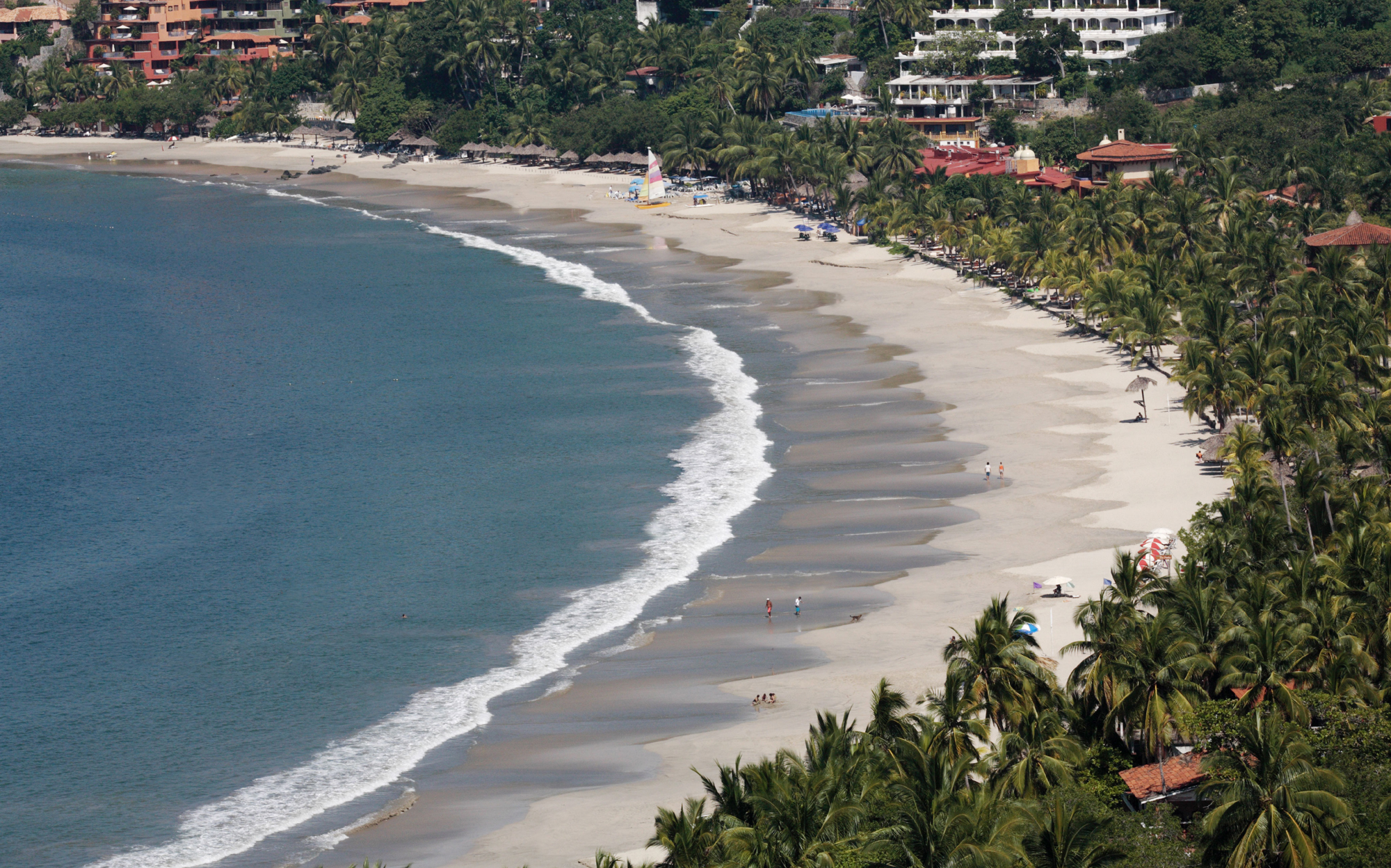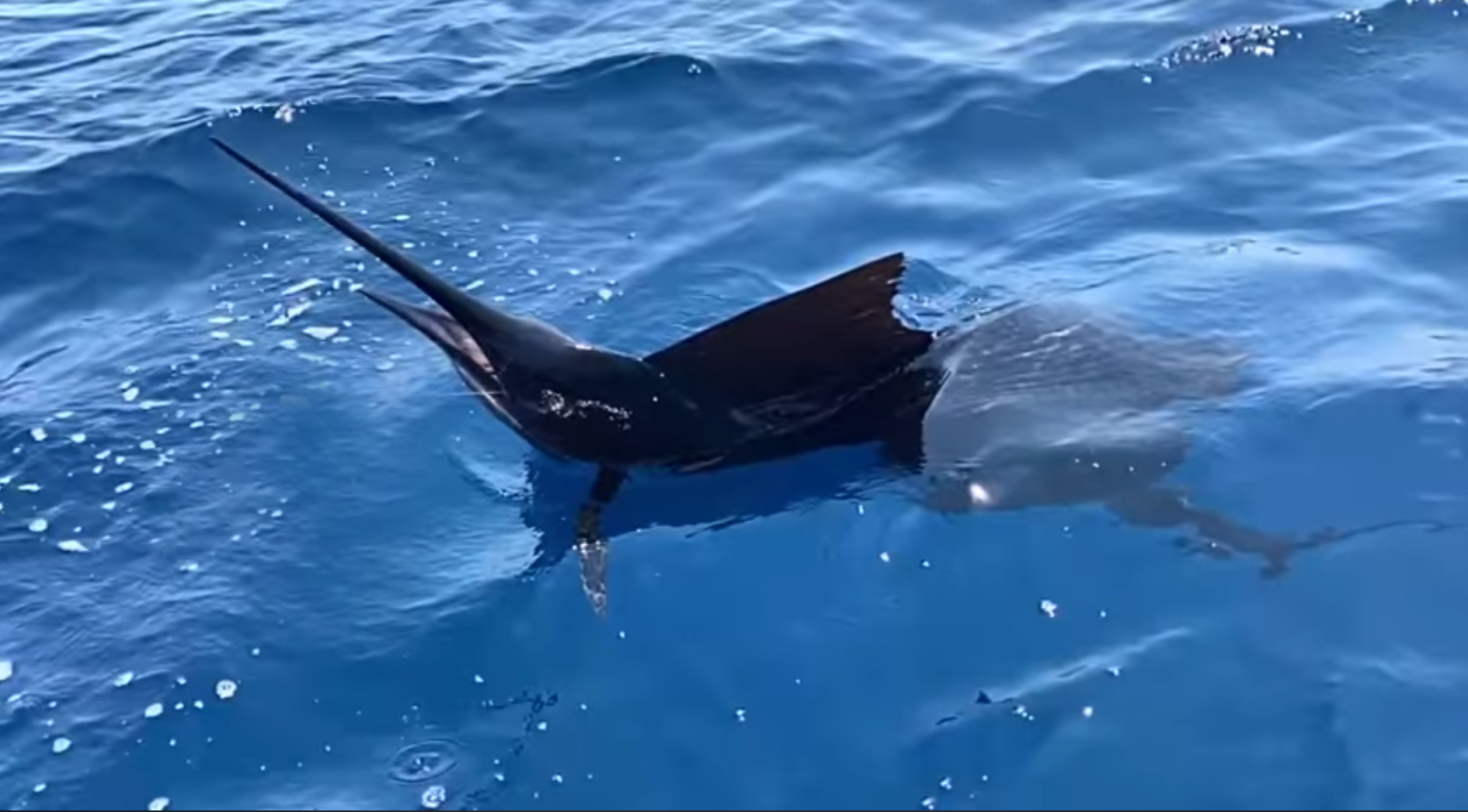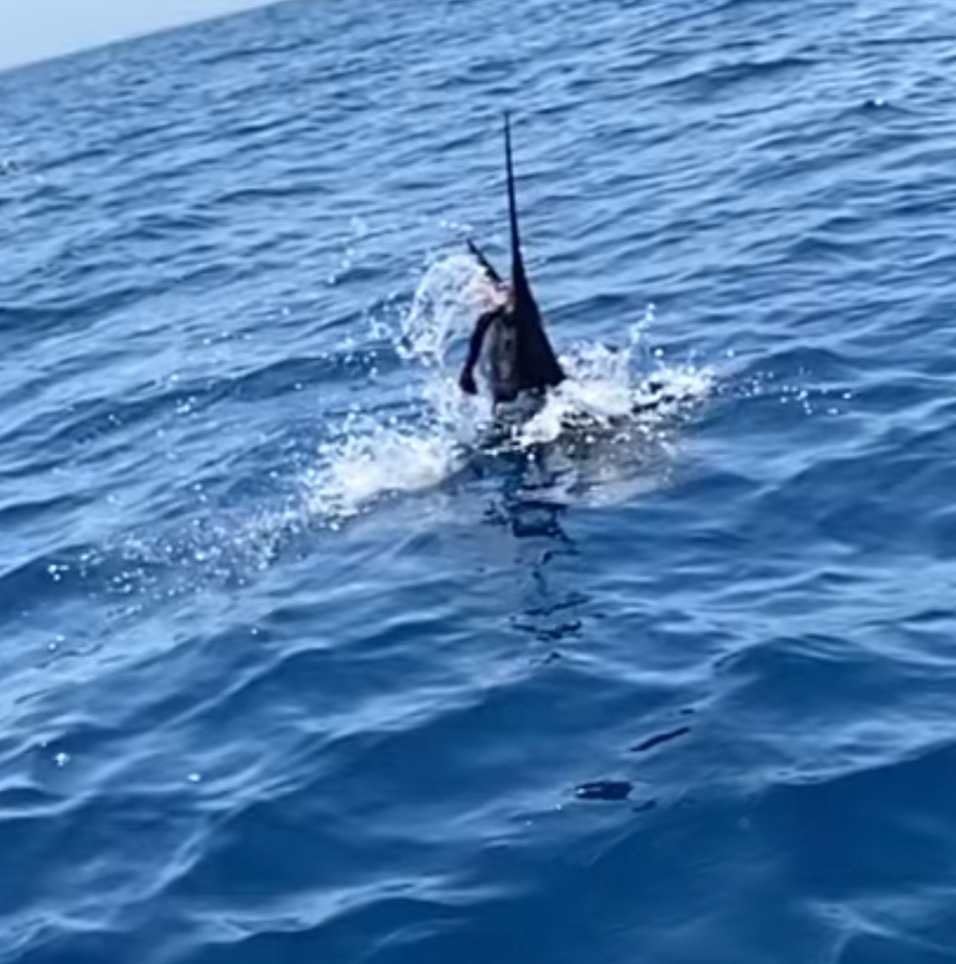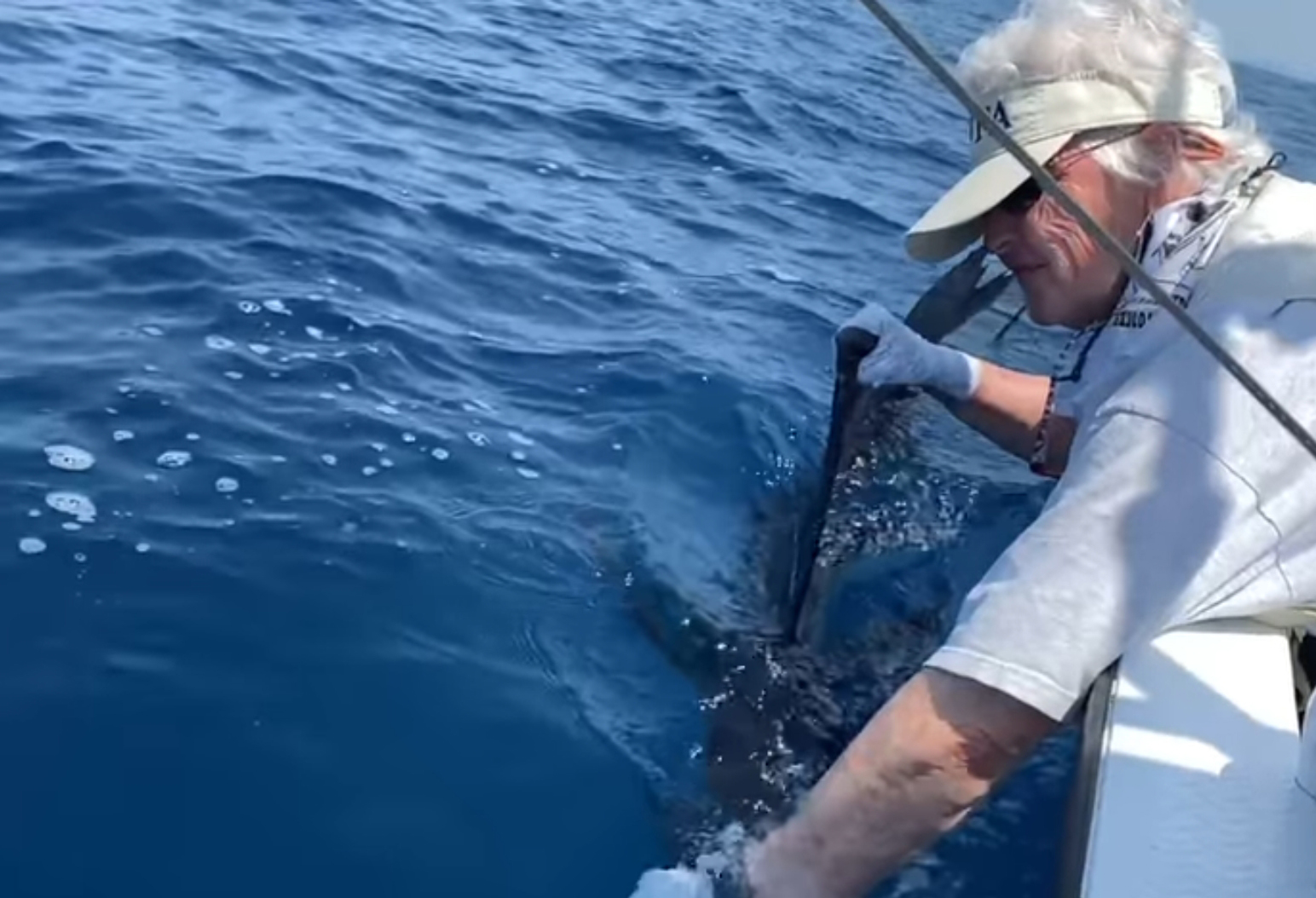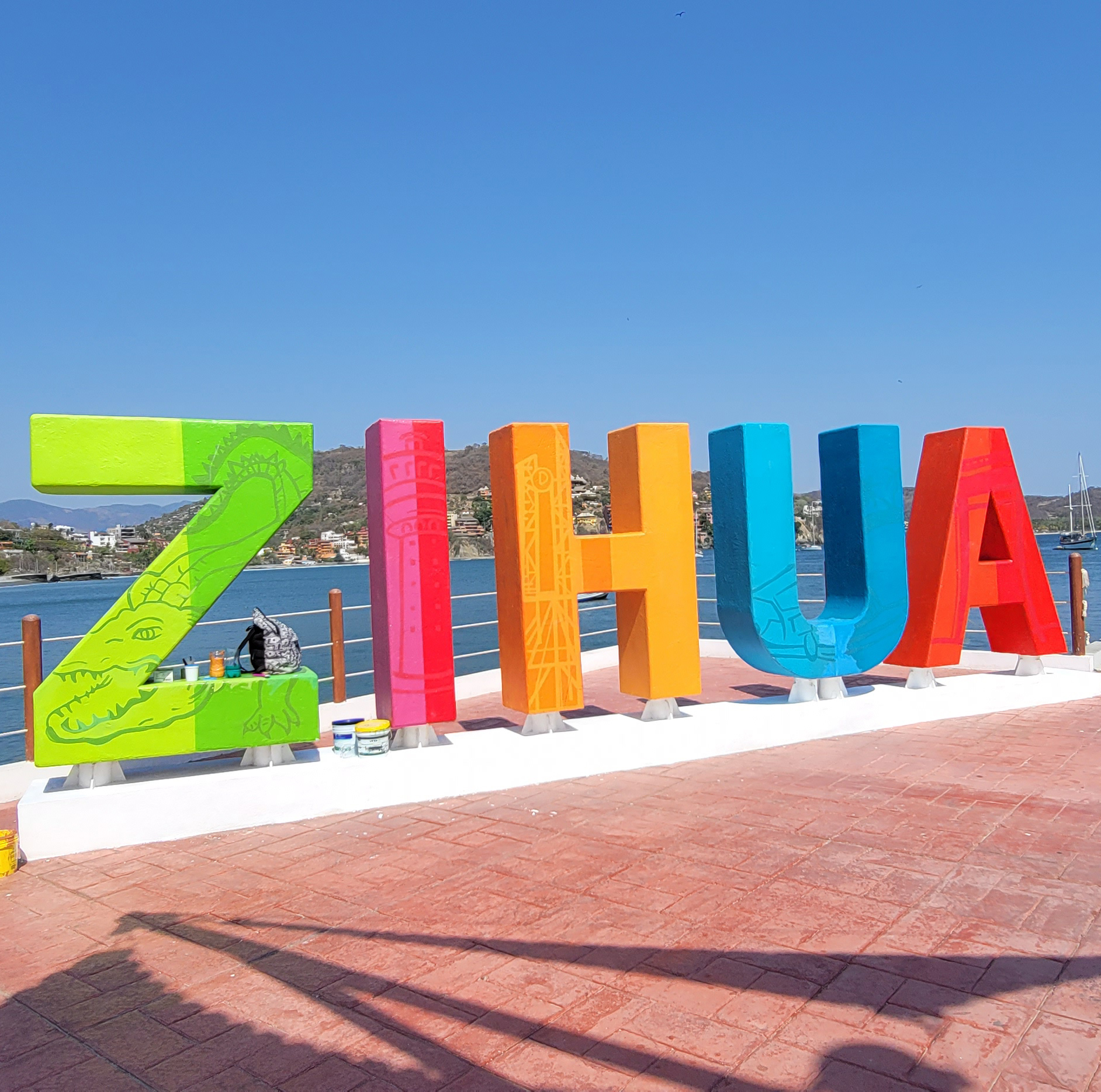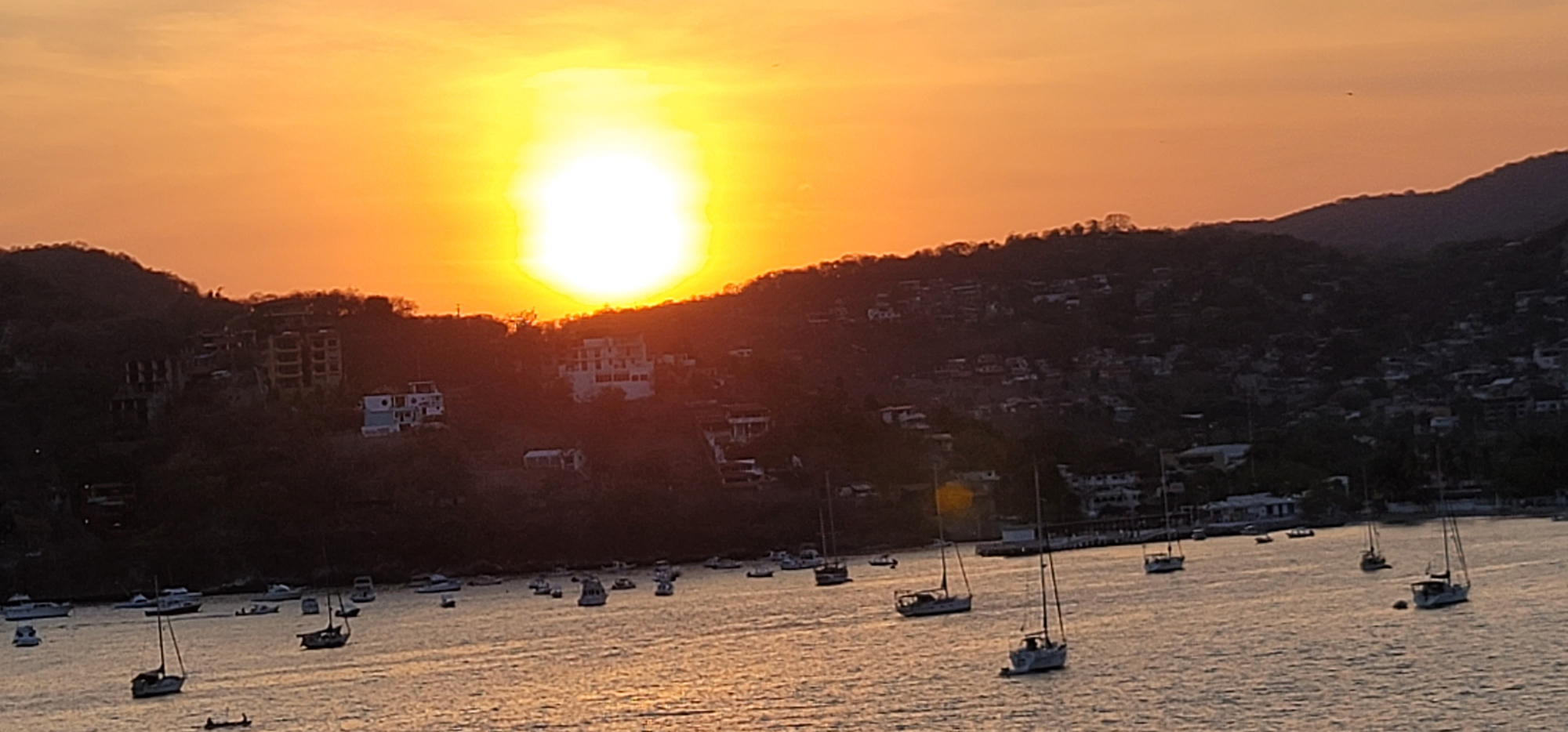Text and photographs by Mary L. Peachin
May/June, 2021 Vol. 24, No. 8, 9
(Note from editor: Covid vaccinations provided incentive to return to one of my favorite Mexico fishing grounds. With Covid procedures carefully followed including testing to return to United States, we felt liberated. The following includes other fishing adventures with my longtime Captain Adolpho.)
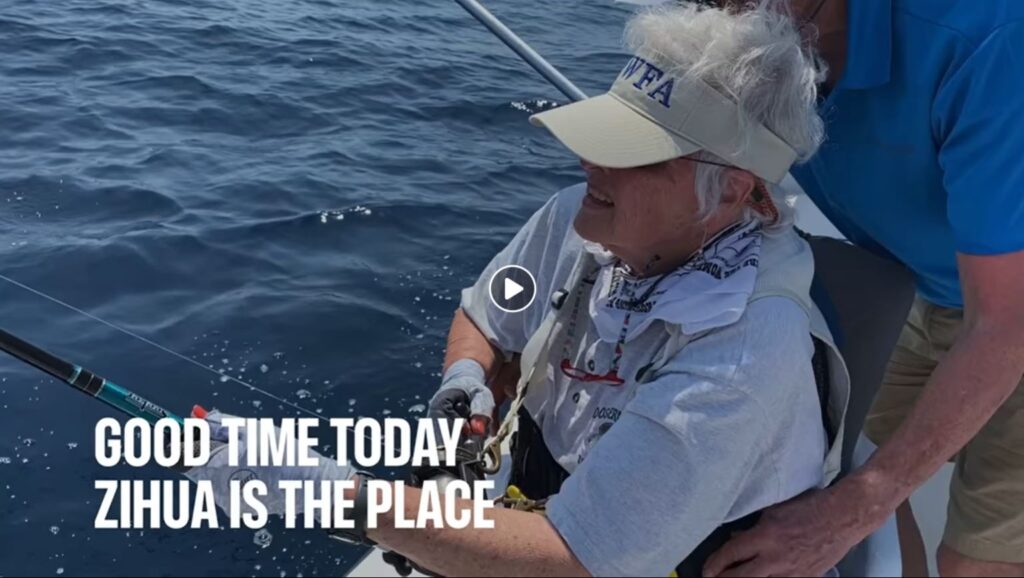 See Mary and David catch and release sail and marlin.
See Mary and David catch and release sail and marlin.
My husband David quickly grabbed the rod as the line whirred quickly. Fighting valiantly, a blue marlin jumped multiple times before breaking the 20-pound line. Once again, we were fishing with my favorite Captain Adolpho. Over a period of three days, the fishing was spotty, but the sailfish appeared to be schooling, and we would get multiple strikes, two or three, at the same time. Adolpho has long been a conservationist, and before releasing the fish, he asks the angler to hold the bill and run water through the billfishs’ gills to revive it. Being with Adolpho brought back memories of some great times fishing the ocean around Zihuateno.
Watching long dorsal fins zigzag as they chased our poppers made our hearts pound. Roosterfish (pes gallo) will veer away from a slowed lure using 30-pound test line. A species of amberjack, the rooster has a run that keeps on running and running and running. Fighting a sizable striped beauty, with cock-like dorsal fins, is an easy half hour fight.
Roosterfish had always eluded me, and it “gnawed in my craw.” Migrating from Baja’s shore in the Sea of Cortez as far south as Costa Rica, their schooling habits always varied from my itineraries. When I read an Ixtapa Sportfishing’s e-blast report that Captain Adolpho had released nine roosterfish in a day, I Googled airline reservations, called my husband David, and said, “Let’s go!”
During Zihuatanejo and Ixtapa’s steamy rainy season, airline service is reduced. A mechanical delay in Tucson meant a missed flight connection in Los Angeles. That delayed our trip by three days and required an overnight stay in Los Angeles. Would the hassle be worth it?
Skunked! “You should’a been here last week.” How many times have you heard that? Finally, for the first time in my life or 30 years of fishing, I was there at the right time, on the very best of days.
Before first light, it didn’t appear like it was going to be such an amazing fishing day. Clashing thunder and lightning bolts jarred us awake. Calling Captain Adolpho’s home, David and I learned that he had already left for the dock, forgetting his mobile. Scrambling out of bed, we jumped in a taxi and slalomed through Zihuatenejo’s flooded streets. Adolpho and his mate, Jesus “Gorilla” Juarez were waiting for us at Paseo del Pescador.
Casa Blanca, an hour’s boat ride south, is a remote beach with pounding surf. Beyond its shoreline, which is lined with miles of coconut plantations, lie the lush green foothills of the Sierra Madre’s. Trolling live cocineros, and casting Yo-zuri pink and blue poppers into the surf, in four hours, we released 13 roosterfish ranging from a dozen to 90 pounds. The average rooster weighs approximately 25-30 pounds.
Trolling with an opened bail, Adolpho suggested waiting five seconds to give the fish time to take the bait. A quick snap of the bail usually resulted in a hook up. Poppers, casted into the surf, require a very quick retrieval.
A release for my memory book was the ninety-ish pounder, who in a flash, spooled my reel. Adolpho wasn’t content to let me lose the fish with his line and popper. Approaching the peak of the ocean swell as safely as possible, Adolpho incredibly spotted the fishing line floating in the water. He quickly grabbed it, re-threaded the rod from the tip, and then tied it to the reel. In a heartbeat, I was again fighting the big guy. We had been trolling south all morning so minutes later, Adolpho suggested that we return to port, a two-and-a-half-hour trip.
Rubbing our aching biceps, we admired the gorgeous seascape bordering remote beaches lined with palms. David and I wondered why Adolpho and Dos Hermanos I was the only boat around. “Roosters ride the waves. It you are too far away, you can’t cast far enough, and flipping his hand upside down, if you get too close to a breaking wave, the boat is a goner, terminado.” Not too many captains will take that risk.
We didn’t expect to savor the same experience twice. In fact, a chubasco the previous night prevented local fisherman from bait fishing. The storm eliminated the possibility of buying more cochineros.
“Today, you are going to have to work hard just casting poppers.” The 10 foot “Beast Master” rod, weighing 100 grams, with 30-pound test was not an easy spin cast. Adolpho could manage a 100 or so yards, mate muscle-bound “Gorilla” could cast perhaps 150 yards. While the roosters weren’t as big as the previous day, we quit after bringing twenty to the boat. Drenched with sweat and exhausted, we topped Adolpho’s eighteen-year personal record of releasing 14, by catching six more, a total catch of twenty. Keeping a few of the tasty fish, similar in consistency and flavor to dorado or mahi-mahi, Adolpho proudly said, “those guys at the dock will be all over me like seagulls.”
* * *
Paseo del Pescador, Zihuatanejo and Ixtapa’s fishing dock, jumps during the hour before sunrise. And that frenetic early morning activity continues all year round. Anglers waiting their turn to board-chartered boats anchored off the Paseo, eyes pop open as they awake to the action-packed scene. Women sit on the dock selling Big Eye scads and cocineros, a small, hearty green jack used as trolling bait. Feral cats rest patiently as if trained to wait for the leftovers. Captains, and a few gringos, pause at a stall to grab a coffee, burrito, or tortillas.
As the sun rises over the Pacific, the departing fleet of fishing boats head north or south for inshore fishing or directly westward, motoring approximately ten miles into blue water to troll for billfish, dorado, and tuna.
It’s a rare treat to be ocean fishing with my family. Both my husband David and daughter Suzanne are mas o memos “faint of stomach” so we followed the calmer shoreline. Our hope is to catch a rooster fish, a lofty goal since they tend to frequent Ixtapa’s breaking surf in early summer.
Trolling less than a mile offshore on super panga Dos Hermanos I, Captain Adolfo tells us that we are liable “to catch anything.” The area’s abundant schools of sardines and anchovies attract many species of fish. For several hours, we troll rap alas reeling in a dozen or more Spanish mackerel, bonito, and skip jack. With plenty of fish to reel, there’s less time to be distracted by the beauty of the area. Circling Potosi’s rocky islands, we admired saguaro-like cardon cactus. Frigates glided on wind currents, brown-footed boobies’ nest on the island. Waves pounding remote beaches could be, and now are, a surfer’s paradise.
The fiberglass panga has cushioned gunwales and two mounted fighting chairs. A shaded covering protects from the sun, an open-air head, tucked behind a panel near the bow, is an added convenience. Adolpho proudly maintains and annually overhauls the 50-year-old boat. His father originally used the boat for fishing commercially.
These are not the typical pangas found throughout Mexico, they are faster, more comfortable, and overall, more efficient.
While ocean conditions are usually calm in Zihuatanejo and Ixtapa’s waters, we awoke for our second day of fishing with a weather prediction for ten-foot swells with chop and gusting winds. My family quickly bailed on me.
Meeting Captain Adolfo on the Paseo, the two of us motored more than an hour to reach blue water. While his super panga is smaller than many of the more luxurious yachts available for charter, he can run a lot faster. The chop and big waves bounced us like kids on a trampoline.
Gaviotas or gulls swooped around us as Adolpho rigged the outriggers with “big eyes” dressed with a plastic pink lip, just an added attraction for the bill fish. We trailed two squid teasers.
Stricker Classic series rods with Shimano 25 two speed reels holding 30# test were ready for any blind strike in the rough water. As a school of dolphin circled the boat, Adolpho rubbed his nose so I would know they were bottle-nosed.
It was hard to believe that Adolpho’s GPS read a distance of twenty-four miles from shore. Near a shipping lane, we watched cargo loaded freighters heading to and from the Panama Canal. Zihuantanejo’s larger, but slower yachts appeared to be staying closer to shore. Adolpho commented “Rough water=seasick anglers, better for gringos to stay closer to port.”
Within minutes, the outrigger snapped. A Pacific sail, weighing about 100 pounds, performed multiple jumps before I brought it to the boat. Adolpho doesn’t back the boat down on fish so I had a 25-minute workout. Before he released the sail’s bill, he asked me to feed it a bait fish. “I want the sail to have good thoughts and return another day.”
Ten minutes later, Adolpho looked at his watch then grabbed his GPS. Dos Hermanos I had drifted an additional five miles, and we were now 29 miles from the dock. Before we could pull in the lines, both outrigger lines zinged, a “double” hookup. Adolpho placed one rod in the holder as I grabbed the other, reeled in a 105 pounder, then picked up the second rod to release an even larger sail. What a way to end a day of fishing.
Zihuatanejo and Ixtapa simmers with an annual three hundred days of sunshine and its waters are typically calm. In these stable conditions the fishing usually sets up quickly and patterns tend to hold consistent throughout the season. Of course, there are brief transitional periods in late August and September, and those occasional days when strong winds create rough water and make fishing difficult.
More than fishing, it offers La Ropa, one of Mexico’s finest beaches, beautiful resorts, and fine restaurants. Two of them, Tentaciones www.hoteltentaciones.com and Amuleto, amuleto.net ranked with the finest anywhere offering glorious views of Zihuatanejo’s Bay.
Over the years, we have stayed at what is now a Hyatt property called The Thompson. https://www.thompsonhotels.com/. Originally called Villa del Sol, the property has changed brands multiple times over the decades, but it still offers a 600-foot private beach covered with lounge chairs and palapas.

